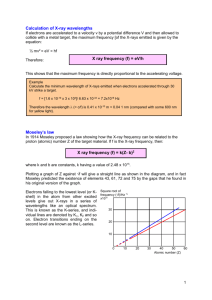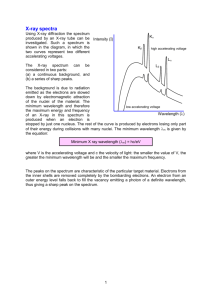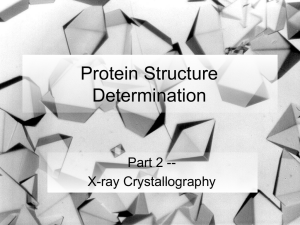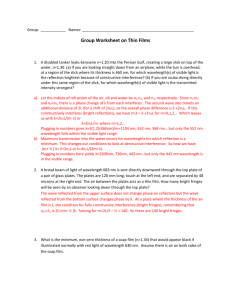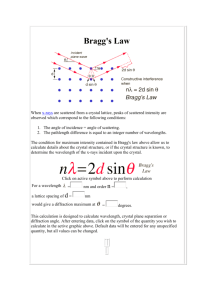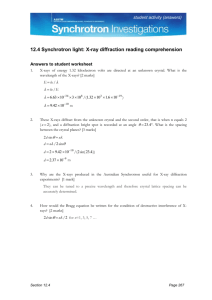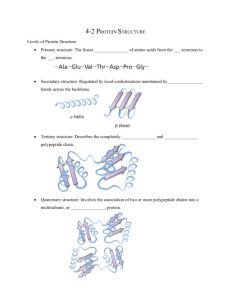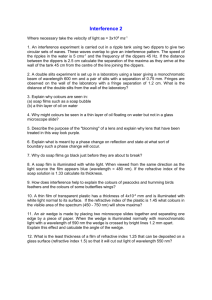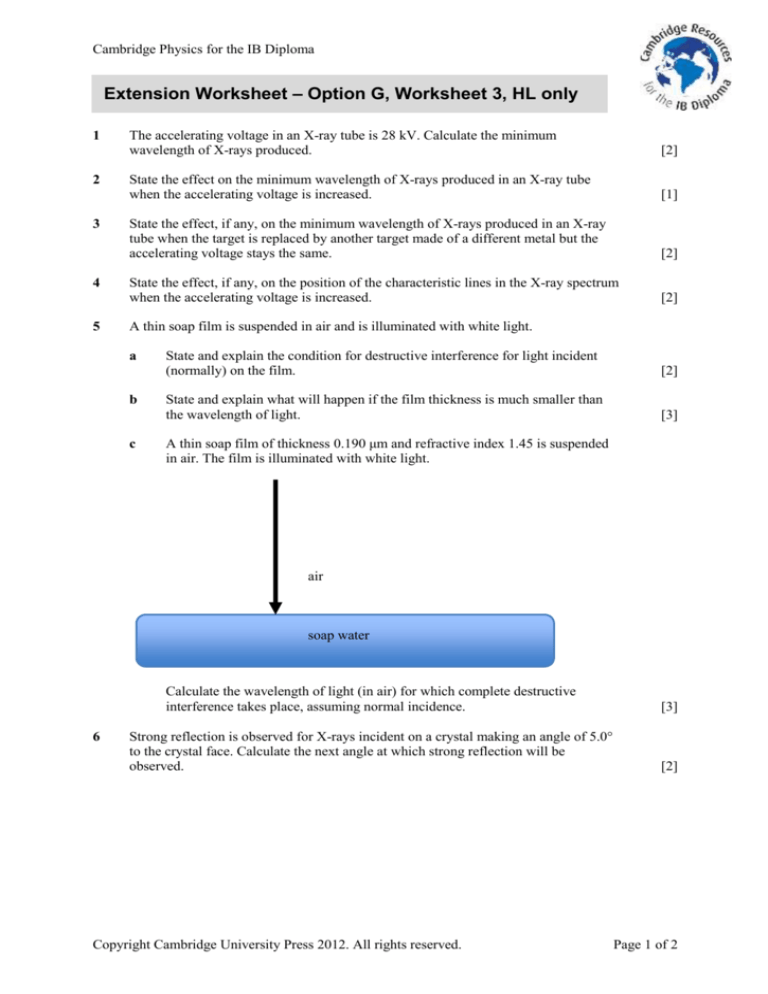
Cambridge Physics for the IB Diploma
Extension Worksheet – Option G, Worksheet 3, HL only
1
2
3
4
5
The accelerating voltage in an X-ray tube is 28 kV. Calculate the minimum
wavelength of X-rays produced.
[2]
State the effect on the minimum wavelength of X-rays produced in an X-ray tube
when the accelerating voltage is increased.
[1]
State the effect, if any, on the minimum wavelength of X-rays produced in an X-ray
tube when the target is replaced by another target made of a different metal but the
accelerating voltage stays the same.
[2]
State the effect, if any, on the position of the characteristic lines in the X-ray spectrum
when the accelerating voltage is increased.
[2]
A thin soap film is suspended in air and is illuminated with white light.
a
b
c
State and explain the condition for destructive interference for light incident
(normally) on the film.
[2]
State and explain what will happen if the film thickness is much smaller than
the wavelength of light.
[3]
A thin soap film of thickness 0.190 μm and refractive index 1.45 is suspended
in air. The film is illuminated with white light.
air
soap water
6
Calculate the wavelength of light (in air) for which complete destructive
interference takes place, assuming normal incidence.
[3]
Strong reflection is observed for X-rays incident on a crystal making an angle of 5.0
to the crystal face. Calculate the next angle at which strong reflection will be
observed.
[2]
Copyright Cambridge University Press 2012. All rights reserved.
Page 1 of 2
Cambridge Physics for the IB Diploma
7
Use the diagram below to derive the Bragg scattering formula 2dsin n for the
angles at which strong reflection off a crystal face takes place.
[2]
8
9
X-rays of wavelength 2.2 1010 m are incident on a crystal face making an angle
of 22 to the crystal face. Calculate the spacing between the crystal atoms.
[2]
A thin piece of paper is placed in between two glass plates.
paper
3.0 cm
When the plates are illuminated with light of wavelength 5.6 107 m , bright and
dark fringes are observed. The number of dark fringes from where the plates touch to
where the paper is placed is 25. Estimate the thickness of the paper.
Copyright Cambridge University Press 2012. All rights reserved.
[3]
Page 2 of 2

